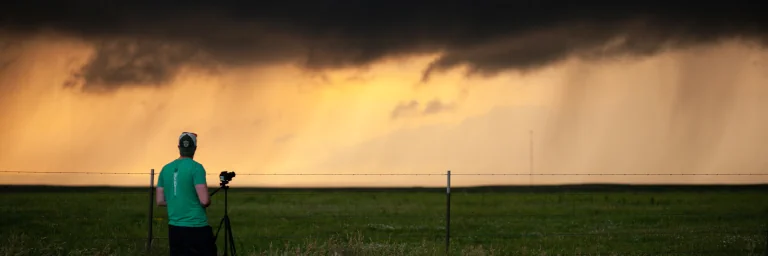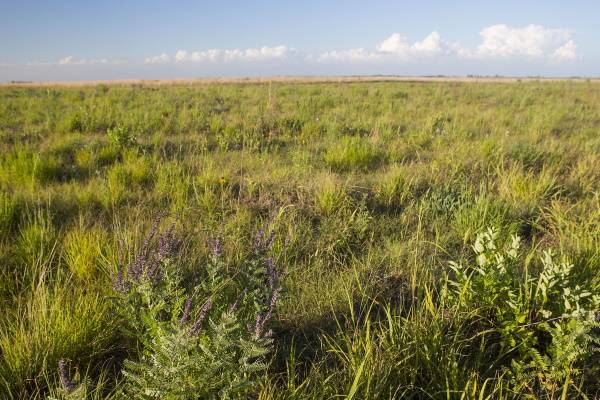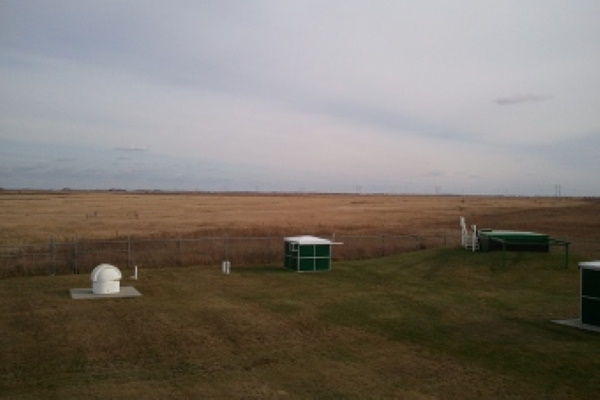
What We Offer
Storm Experience is a fun and exciting 3-credit UND course where you will learn how to forecast and safely observe severe thunderstorms
Our Cessna Citation II Research Aircraft has been modified for conducting atmospheric research, including measuring aircraft speed and position, and atmospheric temperature, relative humidity, and wind
Glacial Ridge Atmospheric Observatory
A long-term atmospheric and hydrologic research facility, the observatory is located on the Nature Conservancy Glacial Ridge Restoration Project site
UND owns and operates a polarimetric doppler radar in support of research and academic programs of the Atmospheric Sciences Department
The AERONET (AErosol RObotic NETwork) is a group of ground-based remote sensing aerosol networks. UND operates one of these sites, located at the Oakville Prairie Field Station
Thermometer Lab
Weather Balloon Launches
Weather balloon carry aloft an instrument package that provides measurements of atmospheric conditions. These measurements are made twice daily at National Weather Service locations across the country and are used in weather forecast models and severe weather forecasting. You will learn how to launch and track these balloons as part of their coursework.
Cutting-Edge Research
Department of Atmospheric Sciences faculty are actively performing research for a variety of government agencies and private companies. Undergraduate students are hired to help with data analysis and other research tasks on these research grants. This will give you a chance to learn how research is conducted and whether a career path in research would be right for you.
Faculty Research Areas
-
Jake Carstens: hurricanes, tropical convection, climate modeling, broadcast and digital meteorology
-
Jordan Christian: subseasonal-to-seasonal weather and climate extremes, utilizing a combination of reanalysis data, satellite observations, and climate models
-
Mounir Chrit: trustworthy artificial intelligence, mesoscale and microscale weather forecasting, environmental solutions for advanced air mobility, guidance to regulations on UAS integration, data assimilation, tropospheric chemistry and aerosol modeling
-
David Delene: air pollution, atmospheric aerosols, climate change, cloud physics, satellite remote sensing of aerosols and clouds, weather modification
-
Andrew Detwiler (adjunct): atmospheric electricity, cloud and aerosol physics, weather modification
-
Montana Etten-Bohm: lightning parameterizations, geoscience education
-
Cathy Finley: severe storms, tornadoes, wind energy
-
Matt Gilmore: cloud physics, cloud microphysics parameterization, cloud-scale modeling, lightning, radar meteorology, severe and hazardous weather, supercell and tornado dynamics, intercomparison techniques between observations and models
-
Aaron Kennedy: mesoscale meteorology and modeling, winter weather and convective storms, in situ observations, remote sensing, UAS
-
Bruce Lee: supercell thunderstorms, tornadoes
-
Marwa Majdi: fog and cloud microphysics, atmospheric aerosols, aerosol chemistry and mixing state weather, forecasting, weather for uncrewed aircraft systems, machine learning for weather prediction
-
Jared Marquis: data assimilation, remote sensing, radiation, agricultural weather
-
Daile Zhang: atmospheric electricity, upper troposphere and lower stratosphere, remote sensing, atmospheric instrumentation, severe storms, cloud physics, natural hazards and safety
-
Jianglong Zhang: aerosols and clouds, radiation and remote sensing, data assimilation, climate and agriculture





